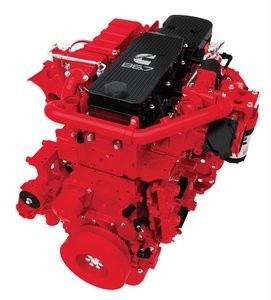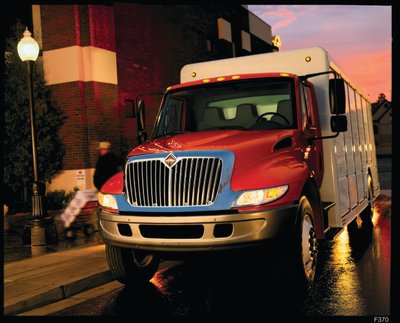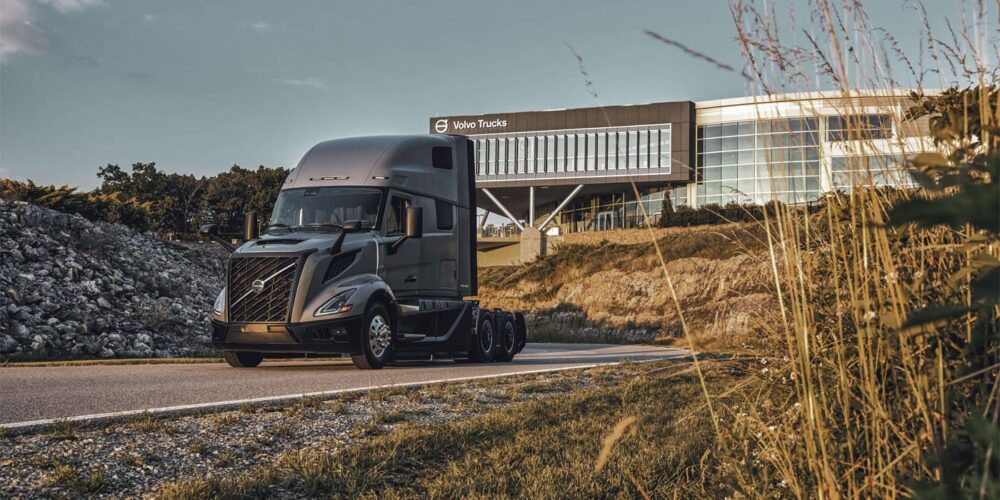“All of our midrange engines are connectivity capable,” Cummins’ Russo says. “With an existing subscription through a telematics provider, drivers and owners can receive instant updates from Cummins engines  through our Connected Diagnostics system, so whenever a fault code is tripped, the engine will send that data through a Cummins system and automatically populate a message back to the customer that will clearly state what happened, the most likely cause, and expert guidance on what to do next. Plus, it will link to the nearest service center. All of this enables drivers and fleet managers to make quick, confident decisions no matter where the truck is or what is happening.”
through our Connected Diagnostics system, so whenever a fault code is tripped, the engine will send that data through a Cummins system and automatically populate a message back to the customer that will clearly state what happened, the most likely cause, and expert guidance on what to do next. Plus, it will link to the nearest service center. All of this enables drivers and fleet managers to make quick, confident decisions no matter where the truck is or what is happening.”
“Peterbilt’s remote diagnostics system is factory-installed and standard on trucks equipped with PACCAR MX-11 or MX-13 engines; so it is benefiting customers across a wide range of markets and applications,” says Anthony Gansle, marketing manager of on-highway products for Peterbilt Motors Co. “Our feedback from customers is that remote diagnostics is making a significant impact on their maintenance operations through improved uptime and greater efficiency in their ability to prioritize and schedule service.”
“Remote diagnostics really empowers fleet managers to make better informed decisions through automatic, instantaneous information on the health of their trucks,” he continues. “A comment we often hear is that they know what’s going with their trucks even before their drivers do. It helps keep deliveries on time because they know if a particular vehicle can continue its run or if it needs immediate service, in which case they can adjust their logistics to keep the load moving.”
Peterbilt’s remote diagnostics system was designed to monitor vehicle performance metrics that are useful to customers regardless of their application and truck configuration. It is as useful to a company running mixers as it is to an over-the-road fleet. monitors more than 750 engine and aftertreatment diagnostic codes, giving customers great visibility to their fleet’s health.”
“OnCommand Connection allows the ability to monitor an entire fleet no matter the make, model, design or application,” Navistar’s Webb notes. “Fleets rely on OnCommand Connection to proactively schedule maintenance and repairs, monitor vehicle health, diagnose and resolve faults and plot vehicle location. The capabilities of OnCommand Connection significantly increase uptime and lower the cost of repairs for any type of fleet.”
Fuel efficiency
While the factors that effect fuel efficiency are broad, electronic engine technology has had the biggest impact—and engine makers continue to stretch the potential of engines and powertrains.
“There are many considerations to component selection to achieve fuel efficiency leadership, but certainly the DDEC electronic engine controls, along with the advanced high-pressure common rail fuel system, are key components,” DTNA’s Moran says. “Up to five separate injection events can be controlled during the combustion process to optimize fuel efficiency and emissions.”
“Even before fuel-efficient features matter, it is imperative that the powertrain is spec’d correctly for the intended application,” Cummins’ Russo notes. “This means not only the right engine and rating, but a matching transmission, rear axle ratio, and tires. Cummins PowerSpec can help guide this process to ensure customers are spec’ing for maximum fuel economy if that’s what they desire).”
Russo said that it is also important to note that fuel efficiency is most affected by tires (rolling resistance) at speeds under 50 MPH, while aerodynamics (cab, trailer gap, etc.) has the greatest effect at speeds over 50 MPH. From there, the engines can offer further benefits in fuel economy—in some cases this occurs through base engine improvements, and others through spec optimization with electronic features. For instance, the 2017 B6.7 has an enhanced combustion recipe utilizing improvements on the VGT turbo that can bring a 7% increase in fuel economy in the efficiency ratings for stop and go duty cycles (200-260 HP), and up to 5% improvement in the performance ratings, without sacrificing power (280-325 HP).
“And because the B6.7 is now stop/start technology capable,” he continues, “customers that spec that option can see an even greater MPG improvement over the base engine increase by stopping the engine when not needed during idling events.
 “Also, the new single module aftertreatment system offers inherent efficiency improvements due to its size reduction,” Russo adds. The systems that will be paired with the B6.7 and L9 will be tailored for the respective sizes and up to 70% smaller and 30% lighter than the current switchback configuration. This reduces total surface area for better heat retention on the DPF for fewer active reservations, and therefore a potential direct savings of fuel.”
“Also, the new single module aftertreatment system offers inherent efficiency improvements due to its size reduction,” Russo adds. The systems that will be paired with the B6.7 and L9 will be tailored for the respective sizes and up to 70% smaller and 30% lighter than the current switchback configuration. This reduces total surface area for better heat retention on the DPF for fewer active reservations, and therefore a potential direct savings of fuel.”
“Cummins also has key electronic features that can help medium-duty customers obtain even greater fuel efficiency,” he continues. “Features like gear-down protection will limit vehicle speed in lower gears to encourage drivers to stay in top gear, where the engines run the most efficiently and the greatest fuel economy savings will be realized. There is also an acceleration management feature to limit unnecessary acceleration when taking off from lights in unloaded conditions. This not only saves fuel but helps reduce tire wear and protect the driveline.”
“All engines offered in our medium-duty models have been extensively tested and proven to maximize fuel efficiency depending on the application and operation of the vehicle,” Navistar’s Webb notes.
“The PACCAR MX-11 engine is designed to deliver optimum performance, industry-leading reliability and durability, and a quiet operating environment for drivers,” says Jason Skoog, a Kenworth assistant general manager and PACCAR vice president. “The 10.8-liter engine is 400 lbs. lighter than 13-liter engines and nearly 100 lbs. lighter than other 11-liter engines for enhanced fuel economy and payload capacity. The MX-11 also offers ample low-end power for applications requiring 430 or less horsepower, such as regional haul, tanker, bulk haul, construction and refuse.”
Today’s smart engines will continue to evolve and, despite the fact that technology usually increases the purchase price of vehicles, the benefits from improved efficiencies will help fleets moderate the total cost of ownership during the life-time of their vehicles.














